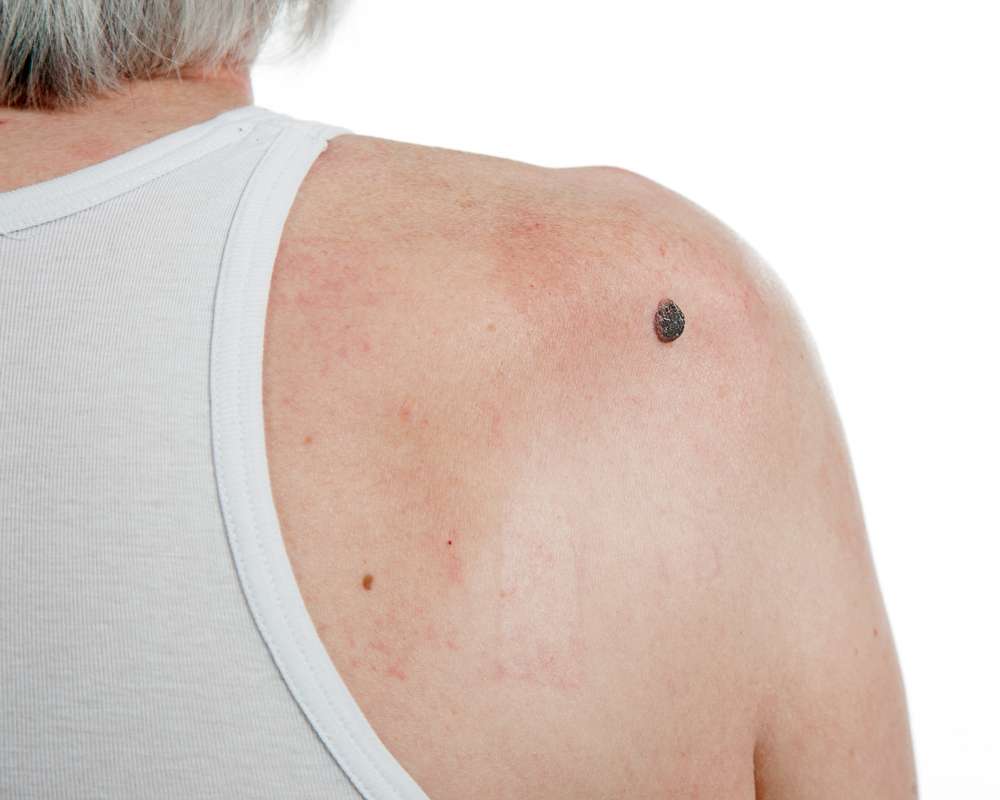Doctors Warn: This Rash Is Linked to Skin Cancer
A seemingly harmless rash could be more dangerous than it appears. According to dermatologists, certain persistent or unusual rashes may be early indicators of skin cancer. These rashes can take many forms — from red, scaly patches to sores that don’t heal — and often resemble common skin conditions like eczema or psoriasis. Because they develop slowly and painlessly, many people ignore them until they progress. Recognizing these warning signs early and seeking prompt medical advice can make the difference between simple treatment and a life-threatening condition.

Skin cancer represents one of the most common forms of cancer worldwide, with melanoma being among the most dangerous types. Recent medical research has highlighted the connection between certain skin rashes and the development of cancerous lesions, prompting healthcare professionals to emphasize the importance of vigilant skin monitoring.
Understanding the Link Between Rashes and Skin Cancer
The relationship between skin rashes and cancer involves complex cellular changes that occur beneath the surface. When normal skin cells undergo malignant transformation, they can manifest as unusual skin changes that may initially resemble common rashes. Melanoma, in particular, can present as irregular patches or lesions that differ significantly from typical skin irritations. These cancerous changes often develop gradually, making early detection challenging without proper knowledge of warning signs.
Certain types of rashes associated with skin cancer include those with asymmetrical borders, multiple colors within a single lesion, or changes in texture and elevation. Unlike common rashes caused by allergies or infections, cancer-related skin changes typically persist and may worsen over time without appropriate medical intervention.
Common Warning Signs to Watch For
Medical experts recommend using the ABCDE method when evaluating suspicious skin changes. Asymmetry refers to one half of a mole or lesion not matching the other half. Border irregularities include jagged, blurred, or uneven edges. Color variations within a single spot, particularly involving shades of brown, black, red, or blue, warrant immediate attention.
Diameter changes, especially growths larger than six millimeters, should be examined by healthcare professionals. Evolution encompasses any changes in size, shape, color, or symptoms such as itching, bleeding, or crusting. Additional warning signs include sores that do not heal within several weeks, persistent scaling or rough patches, and new growths that appear different from existing moles or freckles.
Who Is Most at Risk?
Certain populations face higher risks for developing skin cancer and related rashes. Individuals with fair skin, light-colored eyes, and blonde or red hair have increased susceptibility due to lower melanin production. Those with a history of excessive sun exposure, particularly during childhood, face elevated risks throughout their lifetime.
People with numerous moles, atypical moles, or a family history of skin cancer require regular monitoring. Individuals who have experienced severe sunburns, especially those resulting in blistering, show increased melanoma risk. Additional risk factors include immunosuppression, exposure to certain chemicals, and previous radiation treatments.
Age also plays a significant role, with skin cancer incidence increasing after age 50, though younger individuals are not immune to these conditions.
The Importance of Early Diagnosis
Timely detection of skin cancer significantly improves treatment outcomes and survival rates. When melanoma is identified in its earliest stages, the five-year survival rate exceeds 99 percent. However, delayed diagnosis can result in cancer spreading to lymph nodes and other organs, dramatically reducing treatment effectiveness.
Regular self-examinations allow individuals to monitor changes in their skin and identify potential problems early. Healthcare professionals recommend monthly skin checks, examining all areas including the scalp, between fingers and toes, and other easily overlooked locations.
Professional dermatological screenings provide comprehensive evaluations using specialized equipment and expertise. These examinations can detect subtle changes that may not be apparent during self-assessments.
Modern Treatments and Recovery Options
Contemporary skin cancer treatments have advanced significantly, offering multiple approaches depending on cancer type, stage, and location. Surgical excision remains the primary treatment for most skin cancers, involving removal of the cancerous tissue along with surrounding healthy margins.
Mohs surgery provides precise removal of cancer cells while preserving maximum healthy tissue, particularly beneficial for cancers on the face or other cosmetically sensitive areas. This technique achieves cure rates exceeding 95 percent for certain skin cancer types.
Advanced treatments include immunotherapy, which harnesses the body’s immune system to fight cancer cells, and targeted therapy that attacks specific genetic mutations within cancer cells. Radiation therapy may be recommended when surgery is not feasible or as adjuvant treatment following surgical removal.
Recovery timelines vary depending on treatment type and cancer stage, with most patients experiencing complete healing within several weeks to months. Regular follow-up appointments ensure proper healing and monitor for potential recurrence.
| Treatment Type | Success Rate | Recovery Time | Cost Range |
|---|---|---|---|
| Surgical Excision | 95-98% | 2-4 weeks | $500-$2,000 |
| Mohs Surgery | 95-99% | 1-3 weeks | $1,000-$5,000 |
| Immunotherapy | 40-60% | 3-6 months | $10,000-$50,000 |
| Radiation Therapy | 85-95% | 4-8 weeks | $5,000-$15,000 |
Prices, rates, or cost estimates mentioned in this article are based on the latest available information but may change over time. Independent research is advised before making financial decisions.
This article is for informational purposes only and should not be considered medical advice. Please consult a qualified healthcare professional for personalized guidance and treatment.
Understanding the connection between certain rashes and skin cancer empowers individuals to seek appropriate medical attention when necessary. While not every unusual skin change indicates cancer, maintaining awareness of warning signs and pursuing professional evaluation ensures the best possible outcomes for skin health and overall wellbeing.




